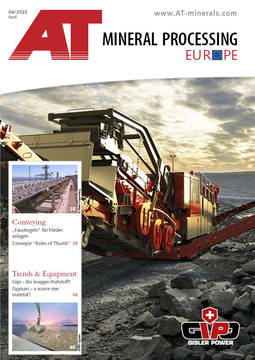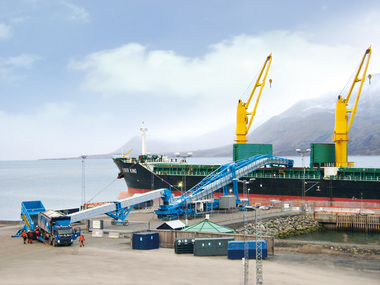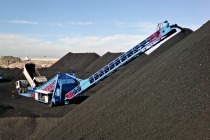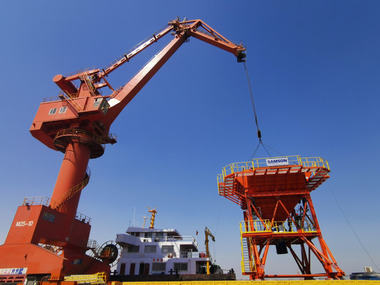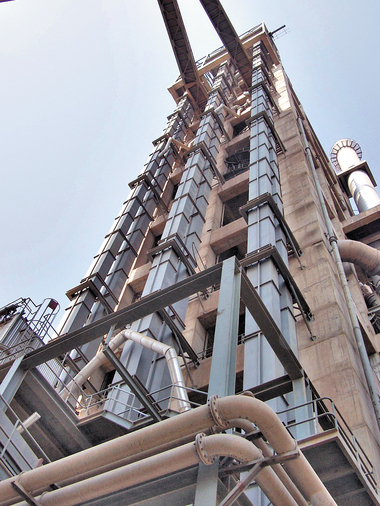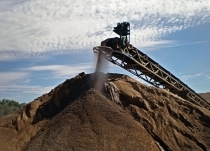Ship unloading with the SAMSON Eco Hopper
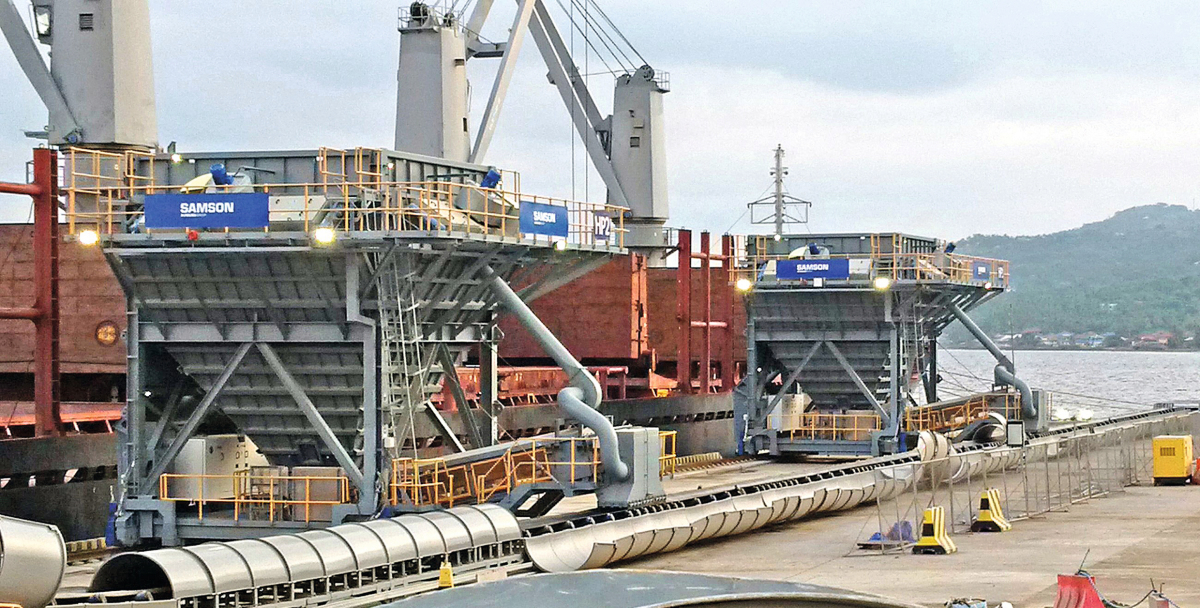 Examples of Rail Mounted Eco Hoppers designed and delivered by SAMSON Materials Handling
Examples of Rail Mounted Eco Hoppers designed and delivered by SAMSON Materials Handling
© SAMSON
Technical Specification and operation of the SAMSON Eco Hopper
The rail mounded Hopper has been designed by SAMSON Materials Handling and is based on the maximum grab dimensions and volumetric capacity of 45 m³. The hopper is positioned between loading points by means of a basic tow travel design which includes non-driven rail wheel blocks, equipped with rubber impact buffers. Access platforms, walkways and handrails are included at all levels for secured maintenance and inspection purposes.
The Eco Hopper has a size of 7.5 x 7.5 m, a hight of 21.9 m above the quay and runs on crane rails. The hopper has sectional reinforcements which are integrated into the design to offer optimal strength and weight to the unit. The inner hopper shield is designed to isolate the dust filter elements from the main material flow and to optimise the filter operations.
The SAMSON Flex-Flap design and other filter systems
The inlet system of the Eco Hopper is based on the SAMSON Flex-Flap design which reduces the volume of air necessary to control dust both from the opening grab and displaced air from material falling into the inner hopper below. This design significantly contributes to the reduction of airflow, reducing filter and power consumption of the equipment. Additionally, the Eco Hopper includes a turbulence reduction system positioned above the Inlet Shroud. This system allows to reduce the wind turbulence above and inside the shroud which is commonly caused by cross winds. As a result, this system reduces the filtration airflow requirements.
The dust filters are located on three sides of the Eco Hopper. This keeps one side clear to allow for the grabs to pass over thus minimising the potential of material falling onto the filter system. The benefits of the Eco Hopper are that it captures all airborne dust generated when unloading coal from the vessel. It then efficiently transfers the coal to the quayside belt conveyors for onward transport to the storage/power plant.

